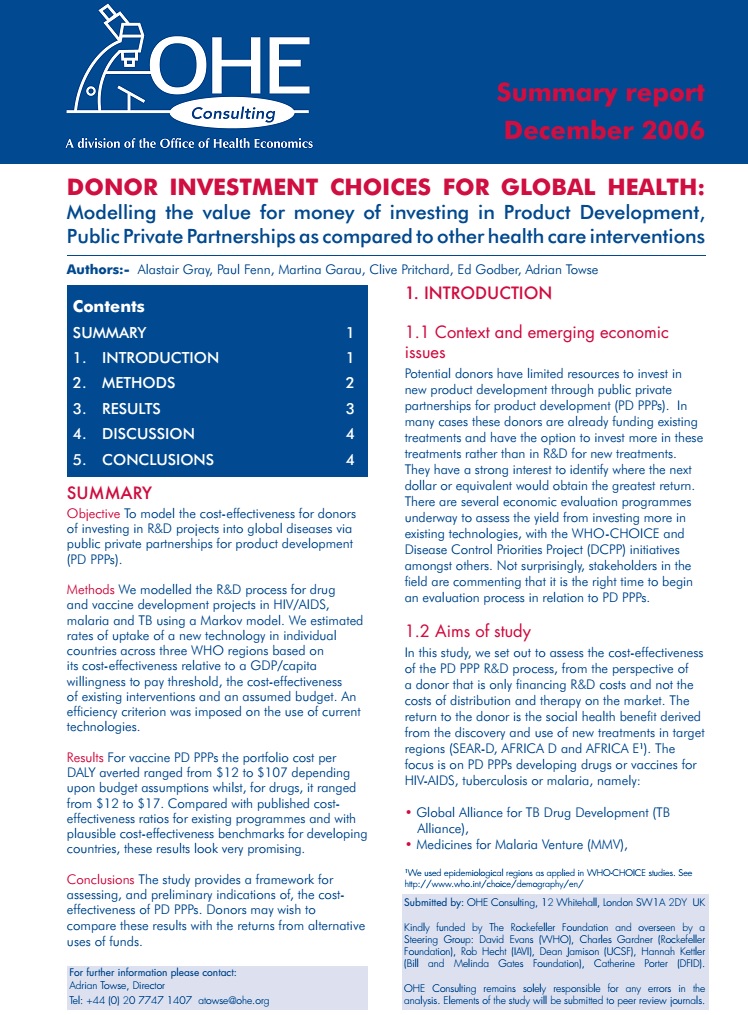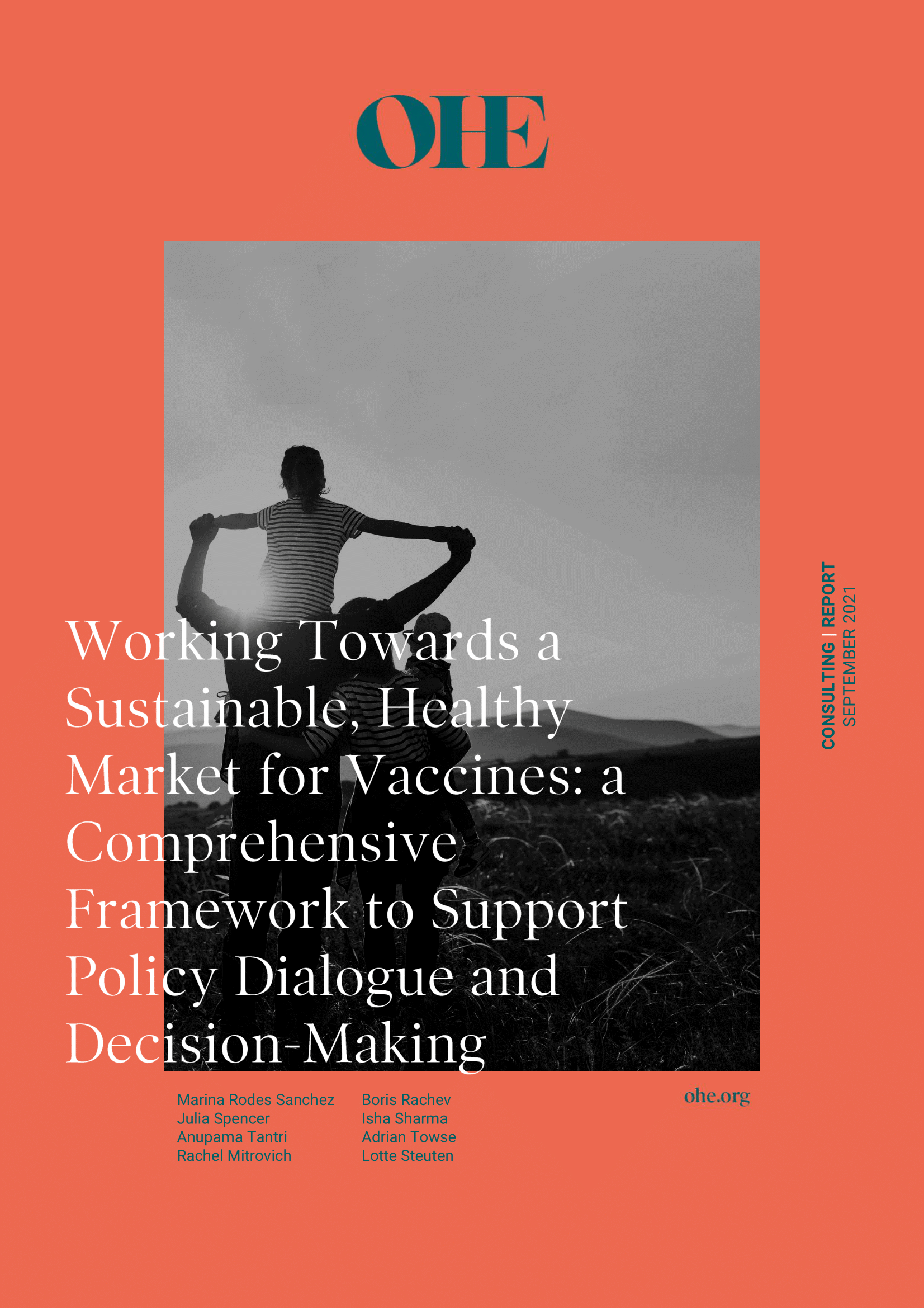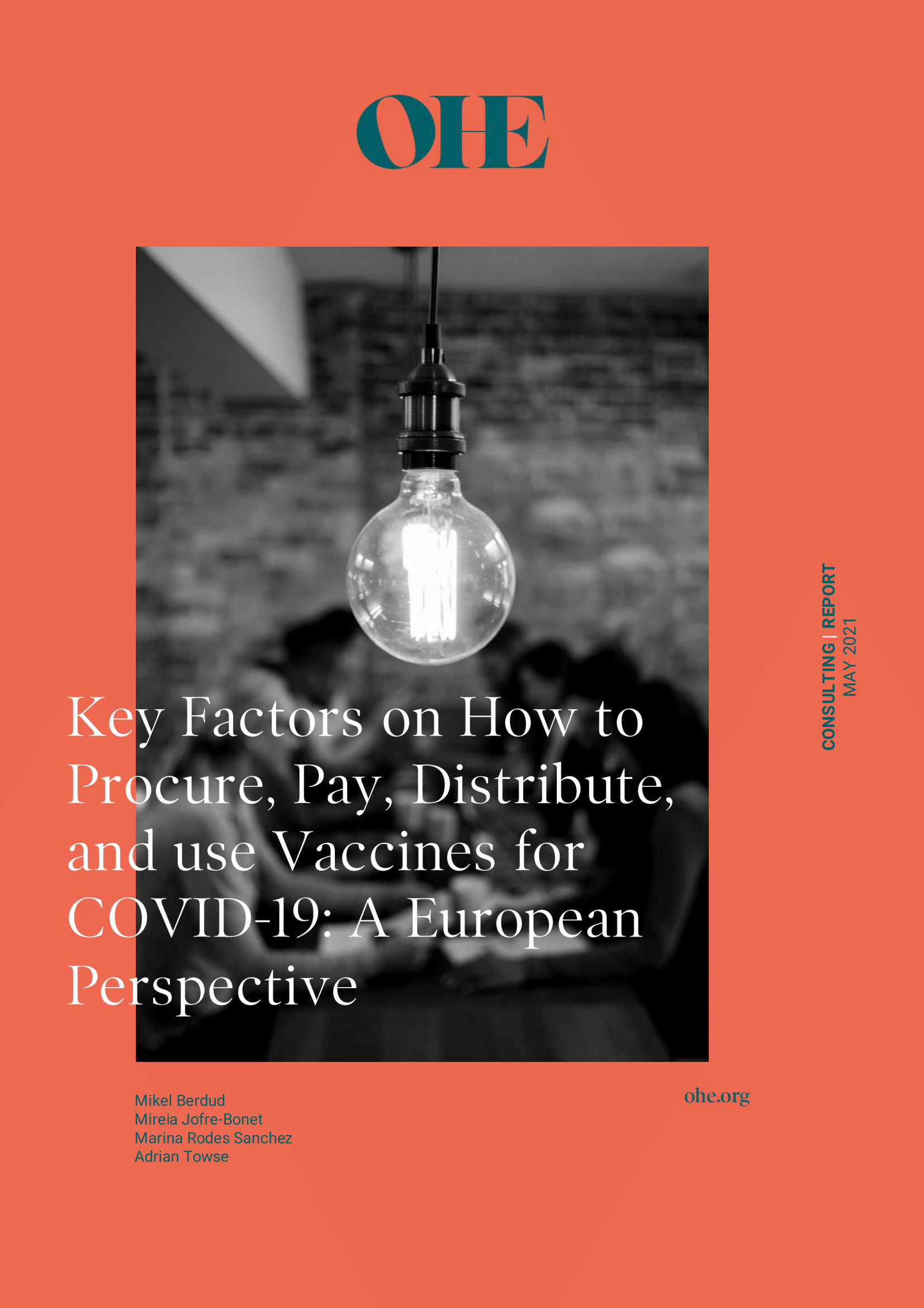Unlocking the Value of Combination Therapies

Objective To model the cost-effectiveness for donors of investing in R&D projects into global diseases via public private partnerships for product development (PD PPPs).
Methods We modelled the R&D process for drug and vaccine development projects in HIV/AIDS, malaria and TB using a…
Objective To model the cost-effectiveness for donors of investing in R&D projects into global diseases via public private partnerships for product development (PD PPPs).
Methods We modelled the R&D process for drug and vaccine development projects in HIV/AIDS, malaria and TB using a Markov model. We estimated rates of uptake of a new technology in individual countries across three WHO regions based on its cost-effectiveness relative to a GDP/capita willingness to pay threshold, the cost-effectiveness of existing interventions and an assumed budget. An efficiency criterion was imposed on the use of current technologies.
Results For vaccine PD PPPs the portfolio cost per DALY averted ranged from $12 to $107 depending upon budget assumptions whilst, for drugs, it ranged from $12 to $17. Compared with published cost-effectiveness ratios for existing programmes and with plausible cost-effectiveness benchmarks for developing countries, these results look very promising.
Conclusions The study provides a framework for assessing, and preliminary indications of, the cost-effectiveness of PD PPPs. Donors may wish to compare these results with the returns from alternative uses of funds.
Donor Investment Choices: Modeling the Value for Money of Investing in Product Development, Public Private Parnerships as Compared to Other Health Care and Non-Health Care Interventions


